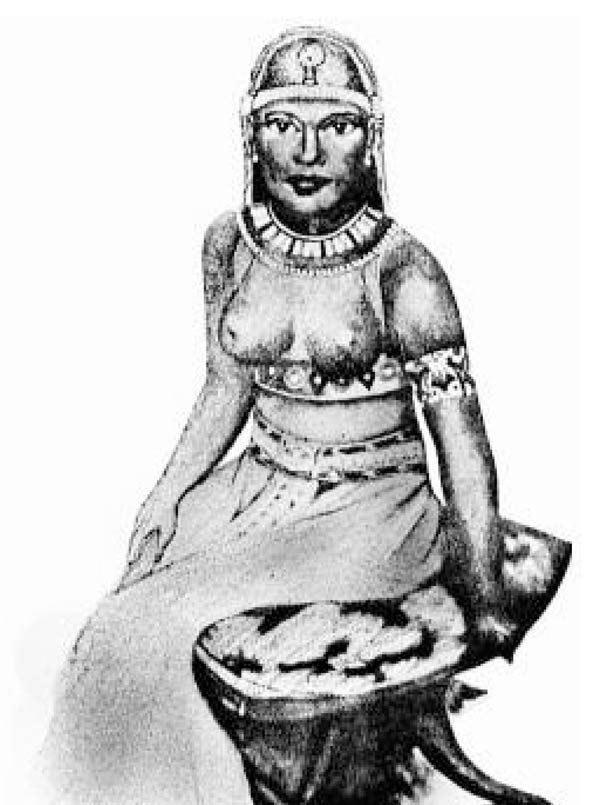John Henrik Clarke Says Yes From African Warrior Queens
“More nonsense has been written about Cleopatra than about any other African queen, mainly because it has been the desire of many writers to paint her white. She was not a white woman until the emergence of the doctrine of white superiority, Cleopatra was generally pictured as a distinctly African woman, dark in complexion. Shakespeare in the opening lines of Antony and Cleopatra called her ‘tawny’. In his day mulattos were called ‘tawny Moors’. In the Book of Acts Cleopatra described herself as ‘black’.”

Figure 1: Cleopatra—Painting by Earl Sweeney
Figure 1. Cleopatra. Painting by Earl Sweeney. This famous queen of Egypt was an African woman. Cleopatra’s father, Ptolemy XII, was an illegitimate offspring of Ptolemy XI (Soter II). The legitimate line ended with Ptolemy XII. Those who say that Cleopatra was “pure” Greek evidently forget this fact (see J.A. Rogers World’s Great Men of Color, Vol. 1). Robert Ripley, who says he has proof of all his facts, calls Cleopatra “fat and black” (see Believe It or Not, page 82, sixth printing, 1934). Pierre Louys says Cleopatra’s mother came from an inferior race, a Nubian woman (see “Aphrodite” by Pierre Louys).

This article appeared in Skeptic magazine 2.4
Buy print edition
Buy digital edition
Subscribe to print edition
Subscribe to digital edition
Mary Lefkowitz Says No
The account of the parentage of Cleopatra VII (69–30 BCE) given by Clarke and in the Portland Baseline essays is somewhat garbled. Frank Snowden, Professor Emeritus of Classics at Howard and the greatest expert on Blacks in antiquity, points out that Shakespeare would have referred to her as an “Ethiope” if he had meant that she was Black. And who says that her unnamed ancestor was a Black person? According to the known facts, Cleopatra VII was the daughter of Ptolemy XII and his sister Cleopatra V. Ptolemy XII was the son of Ptolemy IX (not XI) and a mistress. Since no ancient historian tells us otherwise, the presumption is that his mistress was a Greek. None of the Ptolemies appear to have had connections with Egyptians or other Africans. That of course does not prove that Ptolemy IX’s mistress was not an African; but there is no evidence to show that she was an African.
Frank Snowden Says No
In the first place, it cannot be demonstrated that Shakespeare intended to suggest a ‘black’ by his use of the word “tawny”; he would more likely have used the word “Ethiope,” which in other plays was applied to a Negroid type. Another piece of worthless information advanced as proof of Cleopatra’s “blackness” was a reference to the queen as “fat and black” in Believe It or Not by Ripley, who, Clarke adds with a final flourish, checks all his facts! If so, Clarke would do well to follow his example, because there is no reference to Cleopatra in the Book of Acts. Clarke’s final bit of “evidence” is a modern painting of a Negroid Cleopatra. It is unfortunate that he makes no reference at all to the Macedonian lineage of the entire Ptolemaic dynasty, and to the clearly non-Negroid features of the Ptolemies and of Cleopatra herself depicted on the queen’s own coinage, including those commemorating her union with Mark Antony.
See Frank Snowden’s essay entitled “Bernal’s ‘Black’s’ and the Afrocentrists,” forthcoming in Black Athena Revisited, edited by Mary Lefkowitz and Guy Rogers, Chapel Hill: University of North Carolina Press, 1995.
This article was published on February 11, 2021.














